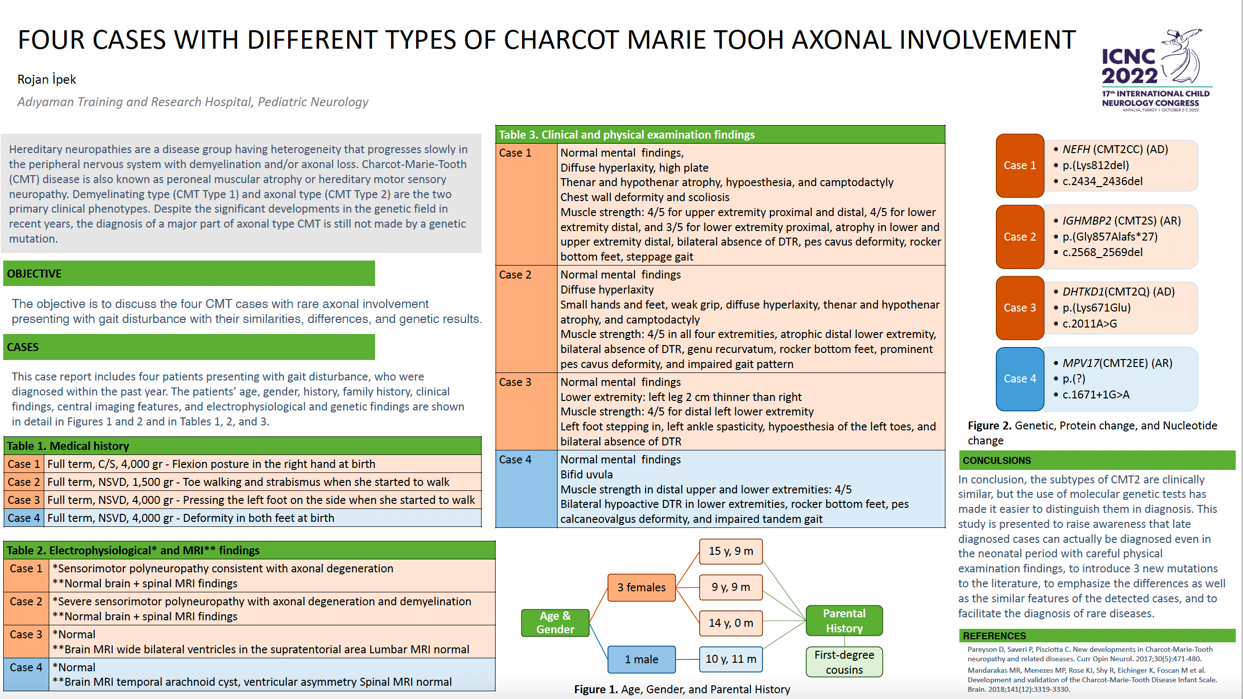Four Different Types of Cases with Charcot-Marie-Tooth Axonal Involvement
Rojan İpek
Hereditary neuropathies are a disease group having heterogeneity that progresses slowly in the peripheral nervous system with demyelination and/or axonal loss. It is classified into 3 subgroups: hereditary motor sensory neuropathy (HMSN), hereditary sensory autonomic neuropathy (HSAN), and hereditary motor neuropathy (HMN). Charcot-Marie-Tooth (CMT) disease is also known as peroneal muscular atrophy or hereditary motor sensory neuropathy. Demyelinating type (CMT Type 1) and axonal type (CMT Type 2) are the two primary clinical phenotypes. CMT Type 1 is a demyelinating type characterized by slowed nerve conduction velocities and marked myelin abnormalities on nerve biopsy, while CMT Type 2 is known as the axonal type with preserved or only slightly slowed nerve conduction velocities and pathological evidence of chronic axonal degeneration and regeneration. Despite the significant developments in the genetic field in recent years, the diagnosis of a major part of axonal type CMT is still not made by a genetic mutation. Here, four CMT cases (aged between 9 and 14 years) with rare axonal involvement presenting with gait disturbance are discussed with their similarities, differences, and genetic results.
Keywords: Axonal type, CMT, Gait disturbance

Adıyaman Training and Research Hospital Turkey